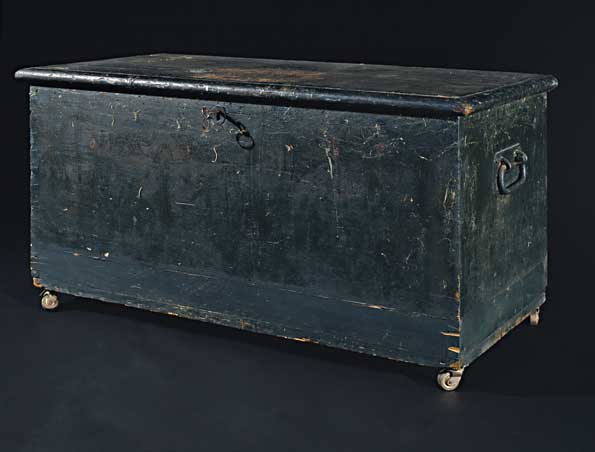 Cabin trunk
Cabin trunk
TLF ID R1768
This is a wooden cabin trunk, painted dark green. It has a hinged lid, two small internal drawers, two iron carrying handles, an original steel lock and key, and modern casters. Made around 1850, it was used soon after by an immigrant to New Zealand.
